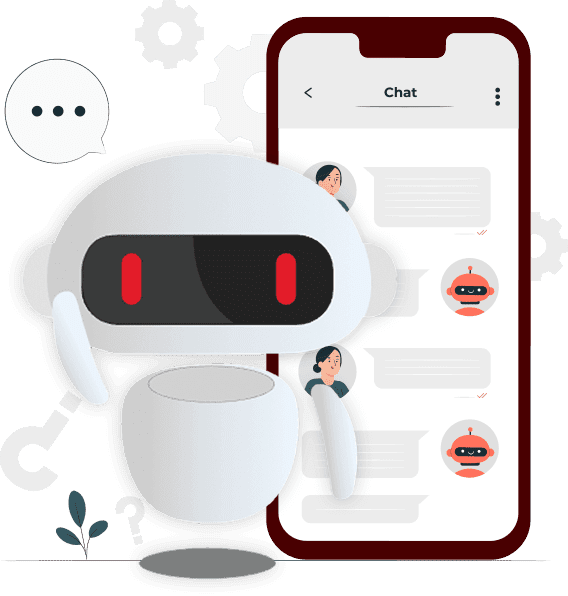
Competitive intelligence strategies can help various departments within an organization achieve their strategic business objectives. Competitive intelligence provides a comprehensive view of an organization’s business endeavors, ranging from competitor monitoring to supply chain intelligence. In this article, we’ll look at how competitive intelligence strategies can help businesses and different departments achieve a competitive advantage in their corresponding market or industry.
Competitive intelligence will benefit different teams in different ways. Competitive intelligence assists in determining how your competitors are performing in the market, but it is not confined to competitor behavior and is not only for strategy or marketing teams.
Sales Teams
Competitive intelligence is an important part of the sales process, and there has been an increase in the number of competitive intelligence tools on the market in recent years. Sales teams can use CI to learn how a prospect is interacting with a competitor’s product. It can reveal the prospect’s pain points with the competitor’s product and assist your sales reps in closing the deal by identifying how your services or product could help solve those pain points.
Competitive intelligence strategies provide sales teams with the capacity to target smarter and engage in more insightful conversations.
They can go into sales calls better prepared with information about competitors and the prospect’s landscape, and they can obtain real-time competitive insights during the calls to modify their sales strategies accordingly.
Sales battle cards are an excellent way for sales teams to organize all of this information in preparation for sales calls. Sales battlecards are competitive intelligence tools used by sales representatives to prepare data on competitors, clients, and prospects in order to answer questions and exceed expectations.
All of this leads to higher win rates because sales reps can adjust their strategies when given more details about their prospects’ needs, competitors, and market conditions.
Marketing Teams
Because of the adaptive nature of the profession, marketing teams benefit from competitive intelligence. Marketing teams constantly test messaging and designs in order to increase demand and lead generation to assist sales teams in closing more deals.
Competitive intelligence assists marketing teams in developing a clear picture of the overall market and landscape. It enables marketing teams to better comprehend customers and their behavior than competitors, allowing them to tailor messaging and other techniques to target pain points and necessary solutions.
It aids in the development of a client-focused marketing strategies, allowing sales teams to bring in more prospects and close more deals.
Marketing teams can use CI strategies to refresh their content by monitoring the type of content competitors publish, determining what works best for their industry by tracking customer behavior, and participating in industry events relevant to their product or service. Lead generation strategies can be used at events to gain relevant insights directly from customers and prospects.
Product Teams
Product teams can use competitive intelligence strategies to visualize and create product roadmaps based on competing products and customer profiles. It also aids in the identification of new competitors and the understanding of competitor products and business models.
Your product team must understand how competitors price and package their products in order to understand where their margins stand in comparison to the rest of the market. They must comprehend the value and price offered by competitors in order to adjust and determine whether their existing pricing model can remain competitive against other organizations in the market.
Understanding the market is another important aspect of competitive intelligence that product teams can benefit from. Understanding where your customers and other stakeholders want your product to go can help product teams further create a product to fit the needs of the consumer, allowing sales to win more deals.
They should use CI tools to track competitors and monitor their customers in order to remain proactive in product refinement. Competitive intelligence also aids in product development as well as staying ahead of the competition.
Procurement Teams
Procurement teams must identify the best solutions and vendors to source direct materials. Moreover, they should also focus on ensuring that they arrive on time and at the lowest possible cost. Competitive intelligence benefits procurement teams in the following ways:
- it allows them to learn how their vendors are thriving in current conditions
- analyzing trends and patterns in consumer behavior, and
- how competitors are procuring materials
Gathering and analyzing multiple factors that may be value levelers is an essential element of competitive intelligence for procurement teams. It includes elements such as innovation and disruption, the competitive landscape, and quantitative data collection.
Competitive intelligence assists procurement teams in better understanding their supply chains by identifying the most efficient suppliers, analyzing spend data and trends, and identifying and tracking risk factors across the procurement process.
Competitive intelligence is used by procurement teams to track their competitors, their vendors, their market, and how both internal and external stakeholders contribute to environmental, social, and government relations.
Executive Teams
Executive leadership teams rely on competitive intelligence strategies to guide their decision-making process. Competitive intelligence also propels their organizations forward in their respective industries. Competitive intelligence assists executive teams in understanding the landscape and how the industry’s top competitors are moving.
Executive teams look for stakeholders and pertinent information that can be confirmed through research.
When communicating competitive intelligence to your executive teams, keep it brief and use their preferred communication methods so that they can easily understand it.
To guide their decisions and to gain a competitive edge, executives need a clear view of the competitive landscape. CI also helps executives ensure that they are not missing out on potential growth opportunities, avoid information silos, and avoid being caught off guard by competitor moves.
Strategy Teams
Competitive intelligence assists strategy teams in identifying and combating competitor movements. It also helps the rest of the organization meet quarterly, annual, or long-term goals.
The strategy team can benefit even more from competitive intelligence by identifying the voids that competitors are attempting to fill and the voids that need to be filled in the market, and relaying that information to other teams across the organization with potential solutions related to the executive team’s goals.
It can assist the strategy team in developing battle cards, competitive strategies, delivering internal content, increasing engagement from external and internal stakeholders, and protecting the organization’s story and goals from unneeded problems that may arise in the media, during manufacturing, or in future endeavors.
Our Methodology
Using XLSCOUT’s Company Explorer you can qualitatively analyze a competitor’s patent portfolio to help you gain solid information for competitive leverage. A statistical process, advanced patent analytics, and a semantic search engine effectively identify the quality of intellectual assets.
The report generated from the analysis can act as a supplement to your expertise. It provides you with new actionable perspectives on intellectual property, patent competition, the marketplace, and other topics.
What exactly are you waiting for?
A comprehensive competitive intelligence tool must mine as well as analyze data. Only when meaning is applied to data does it have value. XLSCOUT’s AI-based tools begin and conclude your searches with meaning. This gives you an advantage in understanding the competitive landscape, anticipating your competitors’ moves, and identifying market opportunities.
XLSCOUT provides you with a competitive dashboard where you can compare the portfolios of different competitors and extract different insights like their filing trends, top problems they are trying to solve, their technology investments, their collaborations, their core patents, etc. With just a few clicks, it creates a patent landscape report tailored to your needs.






